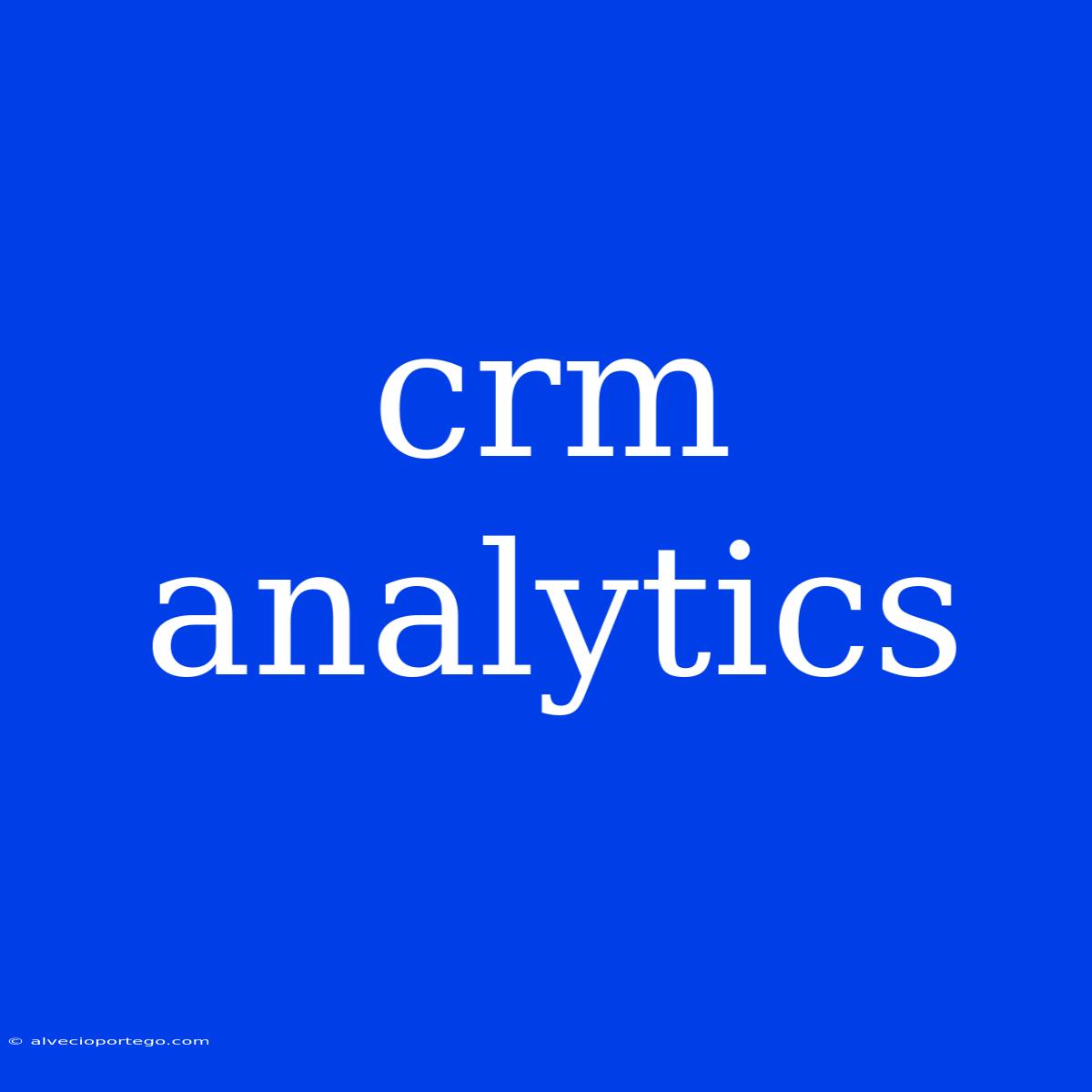CRM Analytics: Understanding Your Customers to Drive Growth
What is CRM Analytics?
CRM analytics is the process of collecting, analyzing, and interpreting data from your customer relationship management (CRM) system to gain insights into customer behavior, preferences, and interactions. This data can be used to improve customer service, personalize marketing campaigns, increase sales, and drive overall business growth.
Why is CRM Analytics Important?
In today's competitive landscape, understanding your customers is essential for success. CRM analytics provides businesses with a powerful tool to:
- Improve Customer Service: Identify customer pain points, streamline support processes, and personalize interactions for a better customer experience.
- Boost Sales: Predict customer needs, target the right audience with relevant offers, and optimize sales strategies for higher conversion rates.
- Enhance Marketing Campaigns: Segment customers based on demographics, interests, and purchase history to deliver personalized and impactful marketing messages.
- Increase Customer Retention: Identify at-risk customers and implement targeted retention programs to build loyalty and reduce churn.
- Gain Competitive Advantage: Understand your market and identify opportunities to differentiate your business and attract new customers.
Key Components of CRM Analytics
CRM analytics involves several key components:
- Data Collection: Gathering data from various sources within your CRM system, including customer interactions, website visits, social media engagement, and purchase history.
- Data Cleaning and Preparation: Ensuring data quality and accuracy through processes like data validation, deduplication, and standardization.
- Data Analysis: Utilizing analytical techniques like descriptive statistics, trend analysis, predictive modeling, and segmentation to uncover insights from the data.
- Visualization and Reporting: Presenting data in clear and concise dashboards, reports, and visualizations to facilitate understanding and action.
- Actionable Insights: Transforming data into actionable insights that can be used to improve customer service, marketing campaigns, and sales strategies.
Benefits of CRM Analytics
Implementing a robust CRM analytics strategy can bring numerous benefits to your organization, including:
- Increased Customer Satisfaction: By understanding customer needs and preferences, you can provide better service and personalized experiences.
- Higher Sales Conversion Rates: Targeted marketing campaigns and optimized sales processes can lead to more conversions and increased revenue.
- Improved Customer Retention: By identifying at-risk customers and implementing retention strategies, you can reduce churn and build customer loyalty.
- Enhanced Operational Efficiency: Streamlined processes and data-driven decision making can improve overall efficiency and reduce costs.
- Competitive Advantage: Gaining insights into customer behavior and market trends can help you stay ahead of the competition.
Conclusion
CRM analytics is a powerful tool that can provide businesses with valuable insights into their customers. By leveraging this data, businesses can improve customer service, enhance marketing campaigns, drive sales, and gain a competitive advantage in the marketplace. Investing in CRM analytics is crucial for any business looking to succeed in today's data-driven world.

